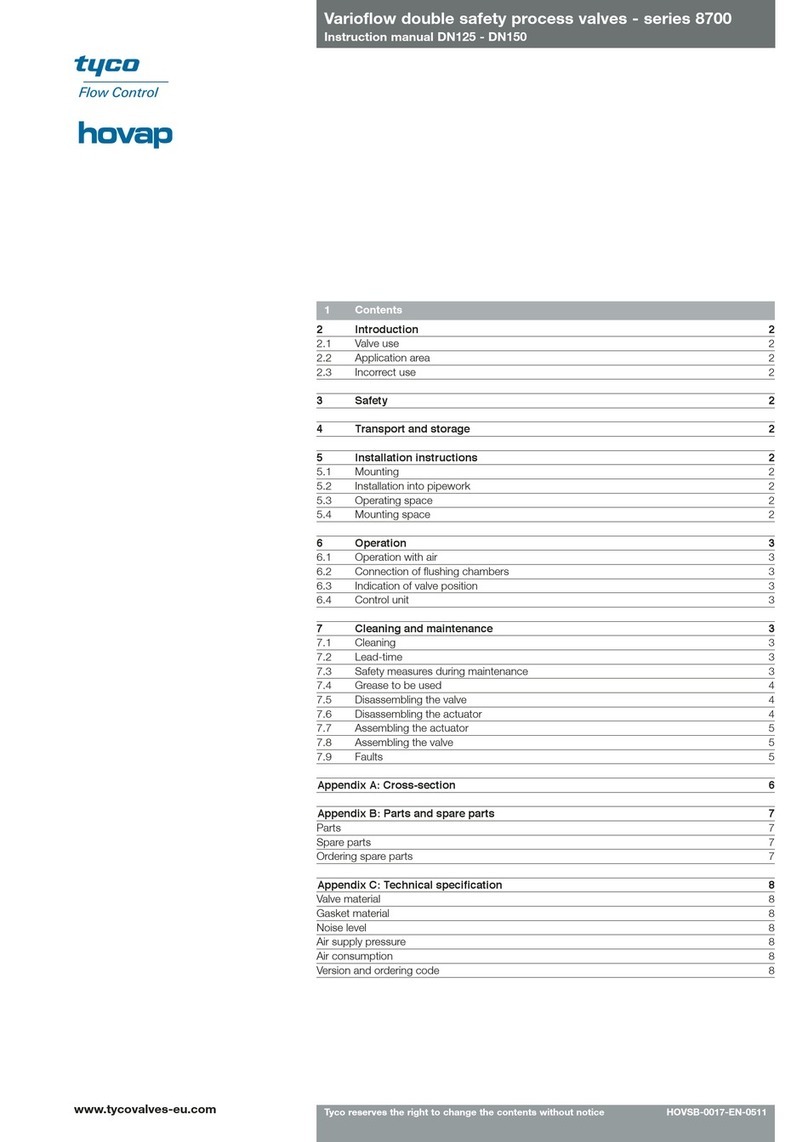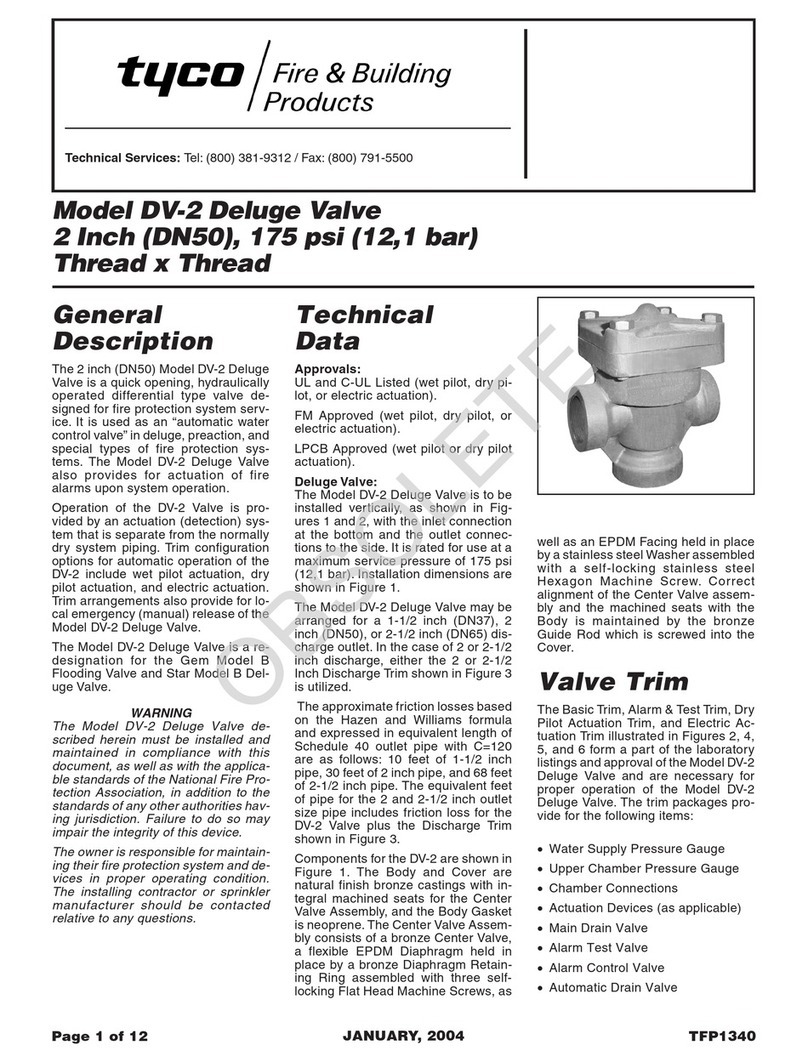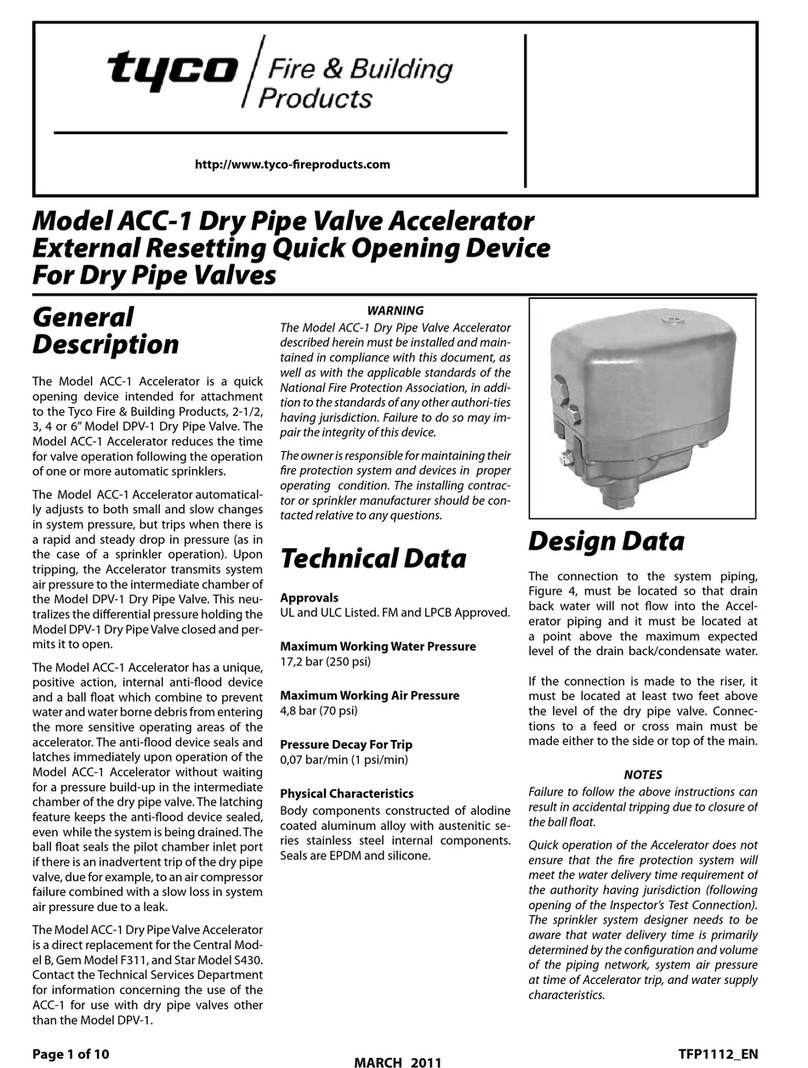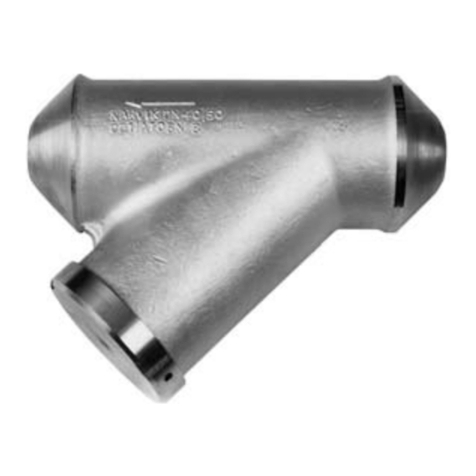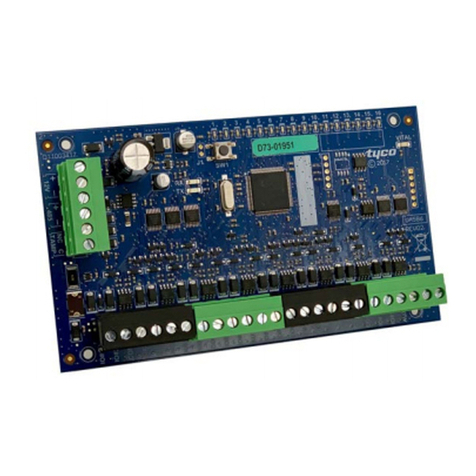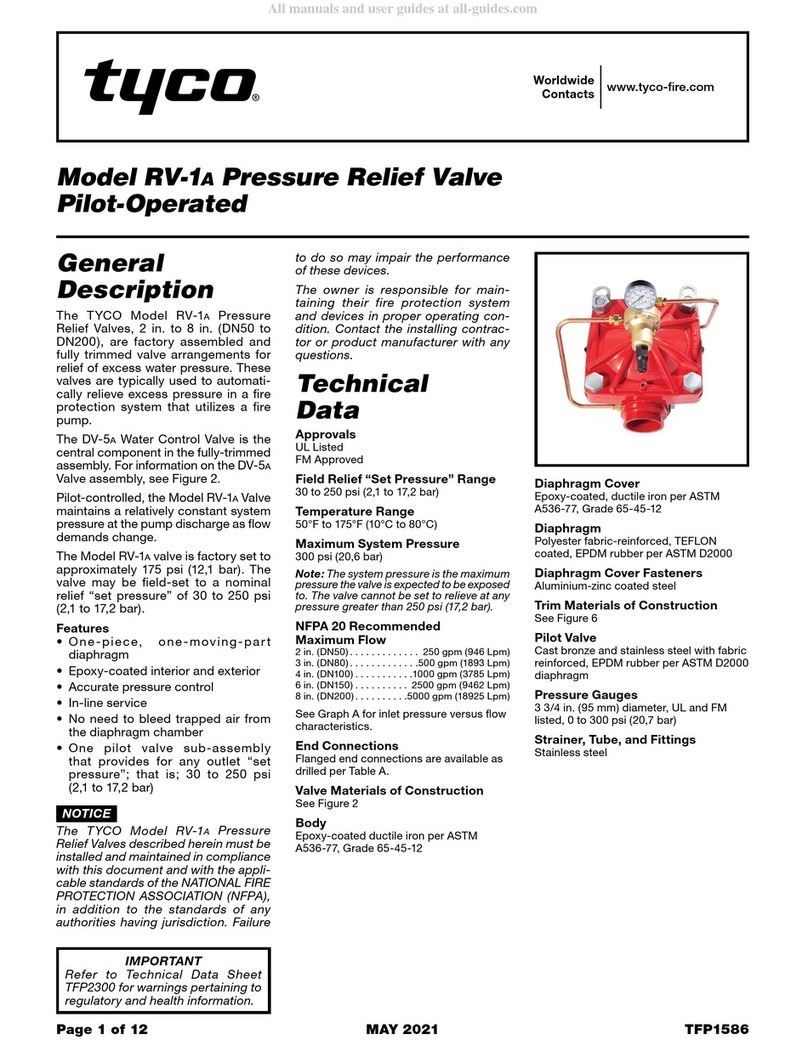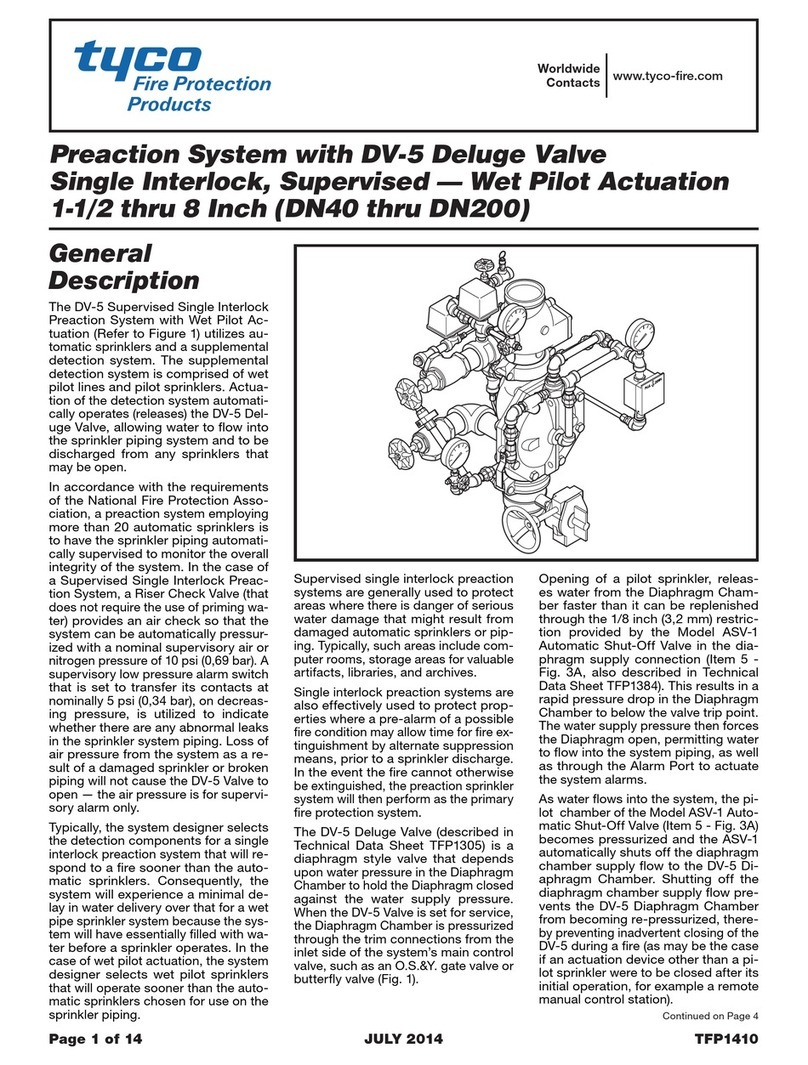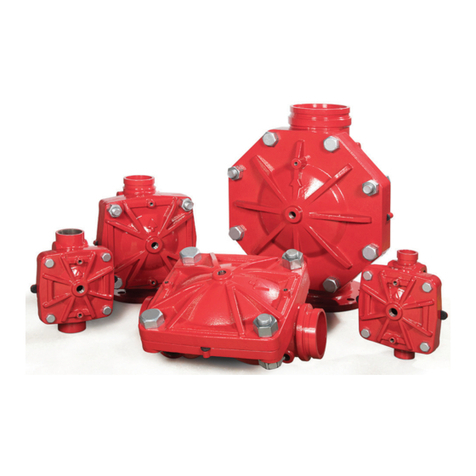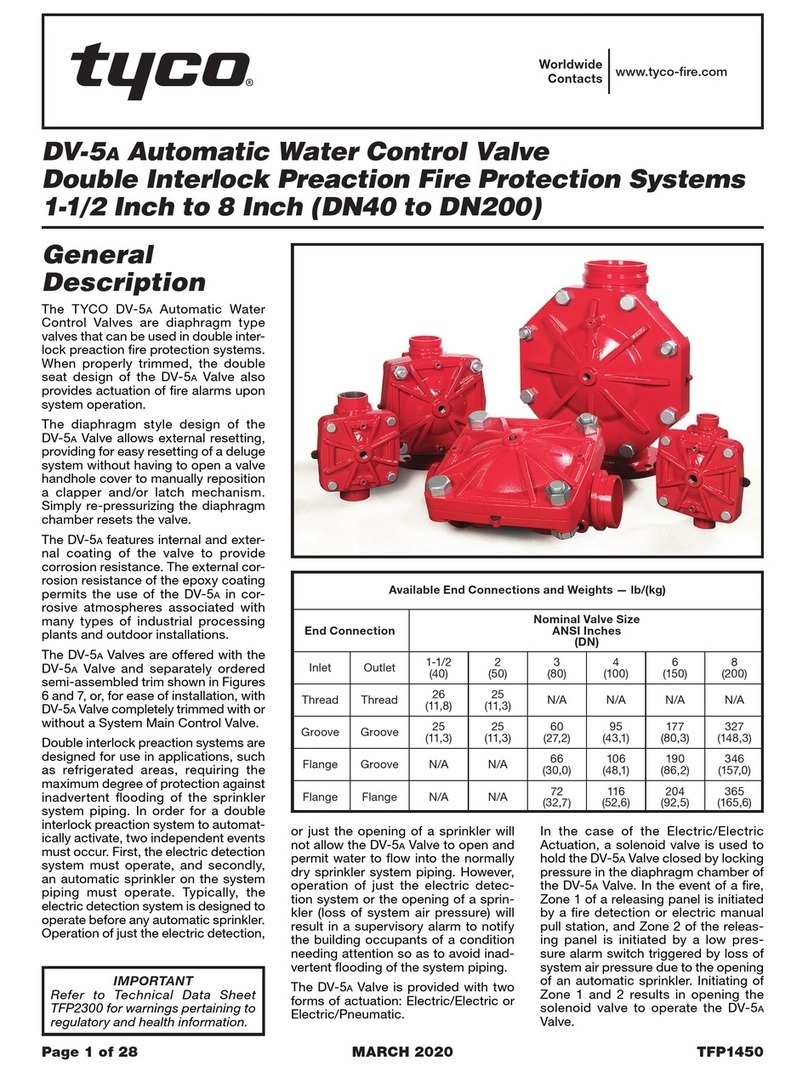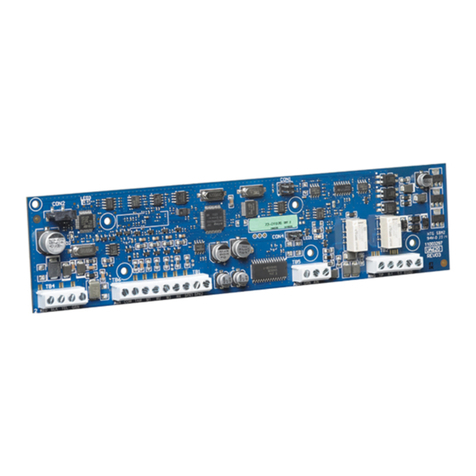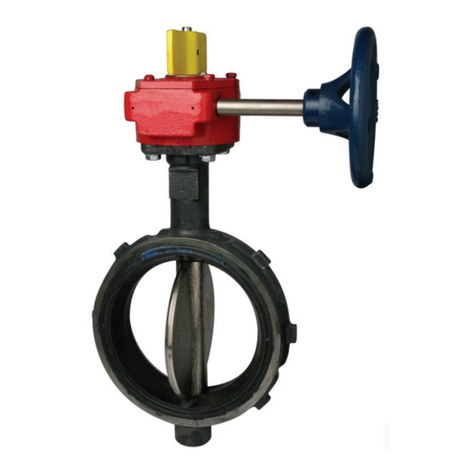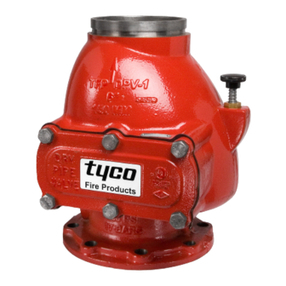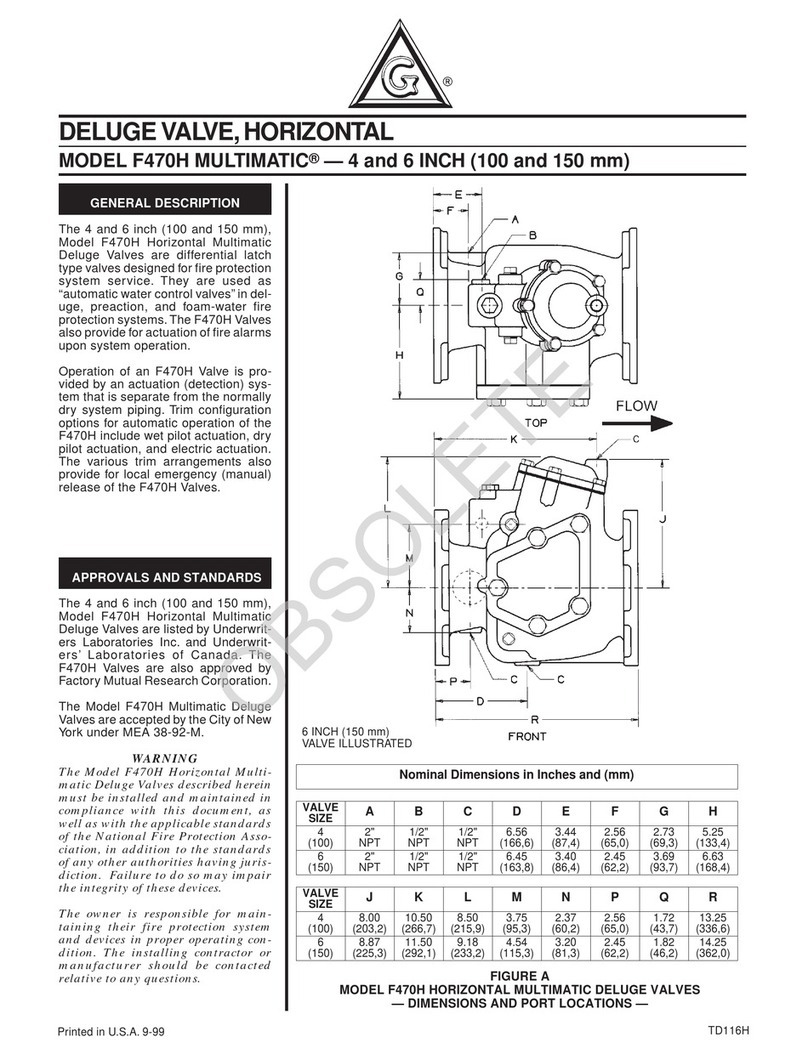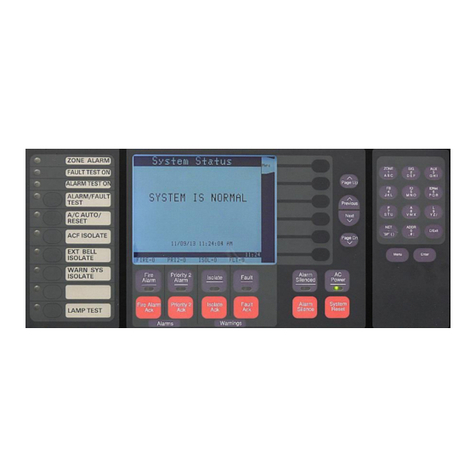
Chamber is pressurized through the
trim connections from the inlet side of
the system’s main control valve, such
as an O.S.&Y. gate valve or butterfly
valve (Fig. 1).
Operation of an electrical detection de-
vice such as a heat sensitive thermo-
stat, smoke detector, or electrical man-
ual control station signals the deluge
valve releasing panel to energize the
Solenoid Valve. In turn, the energized
Solenoid Valve opens to release water
from the Diaphragm Chamber faster
than it can be replenished through the
1/8 inch (3,2 mm) restriction provided
by the Model ASV-1 Automatic Shut-
Off Valve in the diaphragm supply con-
nection (Item 5 - Fig. 2A, also de-
scribed in Technical Data Sheet
TFP1384). This results in a rapid pres-
sure drop in the Diaphragm Chamber
to below the valve trip point. The water
supply pressure then forces the Dia-
phragm open, permitting water to flow
into the system piping, as well as
through the Alarm Port to actuate the
system alarms.
As water flows into the system, the
pilot chamber of the Model ASV-1
Automatic Shut-Off Valve (Item 5 - Fig.
2A) becomes pressurized and the
ASV-1 automatically shuts off the dia-
phragm chamber supply flow to the
DV-5 Diaphragm Chamber. Shutting
off the diaphragm chamber supply flow
prevents the DV-5 Diaphragm Cham-
ber from becoming re-pressurized,
thereby preventing inadvertent closing
oftheDV-5duringafire(asmaybethe
case should the Solenoid Valve be-
come de-energized after its initial op-
eration).
WARNING
The Model DV-5 Supervised Single In-
terlock Preaction System with Electric
Actuation Trim described herein must
be installed and maintained in compli-
ance with this document, as well as
with the applicable standards of the
National Fire Protection Association,
in addition to the standards of any
other authorities having jurisdiction.
Failure to do so may impair the per-
formance of the related devices.
The owner is responsible for maintain-
ing their fire protection system and de-
vices in proper operating condition.
The installing contractor or manufac-
turer should be contacted with any
questions.
Technical
Data
Approvals
UL and C-UL Listed. FM Approved.
Deluge Valve
Model DV-5.
Riser Check Valve
Model CV-1FR.
NOTE
1-1/2 inch (DN40) risers utilize a 2 inch
(DN50) Riser Check valve in combina-
tion with the 1-1/2 inch (DN40) Model
DV-5 Deluge Valve.
Valve Trim
The Supervised Single Interlock Pre-
action System With Electric Actuation
Trim (Fig. 2A/2B) forms a part of the
laboratory listings and approvals. The
trim is necessary for proper operation
of the DV-5 Valve.
Each package of trim includes the fol-
lowing items:
•Water Supply Pressure Gauge
•Diaphragm Chamber
Pressure Gauge
•Diaphragm Chamber Connections
•Manual Control Station
•Main Drain Valve
•System Drain Valve
•Alarm Test Valve
•Automatic Drain Valve
•System Air Pressure Gauge
•Air Supply Connections
•Low Air Pressure Supervisory
Switch
•Waterflow Pressure Alarm Switch
To ease field assembly of the trim ar-
rangement, the trim components are
provided partially assembled as
showninFigure2B.
The trim arrangement is provided with
galvanized or black nipples and fit-
tings. The galvanized trim is intended
for non-corrosive or corrosive condi-
tions, whereas the black trim is princi-
pally intended for use with AFFF sys-
tems.
NOTE
When the system pressure is greater
than 175 psi (12,1 bar), provision is to
be made to replace the standard order
300 psi (20,7 bar) Water Pressure
Gauges, shown in Figure 2A/2B with
separately ordered 600 psi (41,4 bar)
Water Pressure Gauges.
Detection System
In order for a single interlock preaction
system to be hydraulically calculated
as a wet pipe system, as opposed to a
dry pipe sprinkler system, the detec-
tion system must be designed to oper-
ate sooner than the automatic sprin-
klers on the sprinkler piping.
The Supervised Single Interlock Pre-
action System With Electric Actuation
Trim provides for electric operation of
the DV-5 Valve by a detection system
consisting of electrical devices such as
heat sensitive thermostats, smoke de-
tectors, and/or electric manual pull sta-
tions. Information on the various types
of separately ordered Solenoid Valves
that may be used with this trim pack-
age is given in Technical Data Sheet
TFP2180. Nominal installation dimen-
sions for the Supervised Single Inter-
lock Preaction System With Electric
Actuation Trim are shown in Figure 3.
NOTES
Approval by Factory Mutual is contin-
gent on the use of an FM Approved
24VDC Solenoid Valve (P/N 52-287-1-
024 or P/N 52-287-1-124). FM only
approves solenoid valves for use in
non-hazardous locations.
Consult with the Authority Having Ju-
risdiction regarding installation criteria
pertaining to electric actuation cir-
cuitry.
The Supervised Single Interlock Pre-
action System With Electric Actuation
Trim is provided with a Model ASV-1
Automatic Shut-Off Valve (Item 5 - Fig.
2A); consequently, the release circuit
of the releasing panel need only pro-
vide the standard ten minutes of alarm
condition intended to energize the So-
lenoid Valve. After the ten minute du-
ration, should the Solenoid Valve be-
come de-energized and close
(especially while operating under bat-
tery back-up), the Automatic Shut-Off
Valve will have already automatically
closed thereby preventing the DV-5
Diaphragm Chamber from becoming
re-pressurized and preventing an in-
advertent closing of the DV-5 during a
fire event.
System Air Pressure Requirements
The supervisory air (nitrogen) pres-
sure is to be 10 plus or minus 2 psi
(0,69 plus or minus 0,07 bar). The use
of a higher supervisory pressure is
subject to approval by the Authority
Having Jurisdiction, and it should be
understood that the use of a higher
supervisory pressure may increase
water delivery time. The use of a lower
supervisory pressure may prevent
clearing the alarm of the Supervisory
Low Pressure Alarm Switch (Item P3 -
Fig. 2A), which is factory set to alarm
at5plusorminus1psi(0,34plusor
minus 0,07 bar) on decreasing pres-
Page 9 of 14
TFP1420
